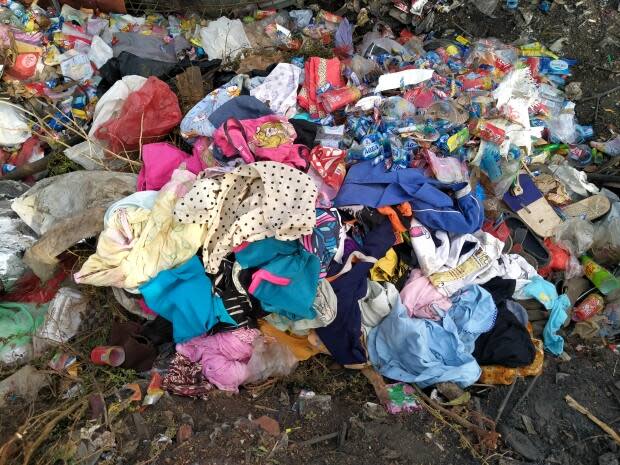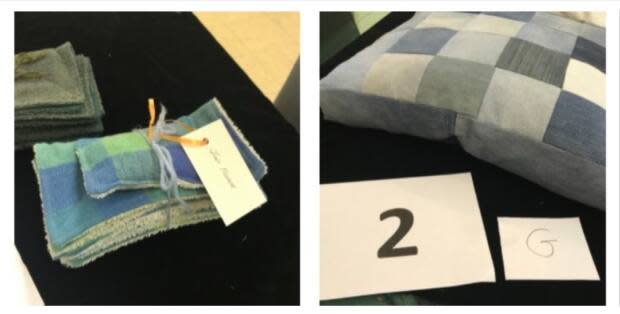Recycling group hopes new upcycled products can help divert all fabric waste from local landfill

In a quest to become zero waste, the Gabriola Island Recycling Organization has selected three design prototypes to help funnel waste fabrics into brand new items to sell.
Michelle Kresnyak, general manager of the Gabriola Island Recycling Organization, says the organization receives over 45,000 kilograms of donated clothing every year. Half of that goes into their thrift store, but the other half would end up in a landfill.
Kresnyak's organization applied for a grant to research ways to divert this wasted fabric.
"To help us with that, we engaged the Gabriola community and the community has a wealth of artists and textile fibre artists, sewers and designers here. So they were really excited to share ideas with us," Kresnyak told host Robyn Burns on CBC's All Points West.
The three upcycled designs selected were an acoustic wall panel, a cloth towel and a dog bed.
Textile waste is a huge, growing problem across the country. In Metro Vancouver alone, almost 20 million kilograms of clothing is thrown out each year.
Kresnyak said she hopes the project in Gabriola will inspire other communities in the Gulf Islands, and other municipalities in B.C., to take on the challenge of diverting fabric fibres from the landfill.
"Our hope is to scale it up to our local district here and be able to capture an even larger portion of the waste stream," said Kresnyak.
Artists were invited to select fabrics during an open studio session, where the "waste" fabrics were available for perusal. The type of fabric in the waste stream also created special challenges.
"About 45 per cent of the waste is polyester. A lot of that poly fibre and other synthetics are really hard to do something with because the fabric is pilled, stretched out, worn out, not fashionable," said Kresnyak.
"We knew that a percentage of the waste stream we would probably have to shred and turn it into stuffing to be used in stuffed applications."
Two of the products chosen to be produced — Sue Artuso's dog bed and Maureen Connelly's acoustic wall panels — use a stuffing concept. The third, Judi Fisher's "un-paper towels" — basically, fabric cloths that resemble tea towels — have already been produced.

"We promoted both of those products at a fashion show we did last month, just doing a soft launch," said Kresnyak.
"They all sold out very quickly, so that was a good indicator that we were onto something."
The group is now working on creating a public workspace for creating more upcycled fabric projects and getting the products produced by the winter.
"We're hoping to sell them [in] online stores as well as locally and really prove that this model can work and be sustainable.

